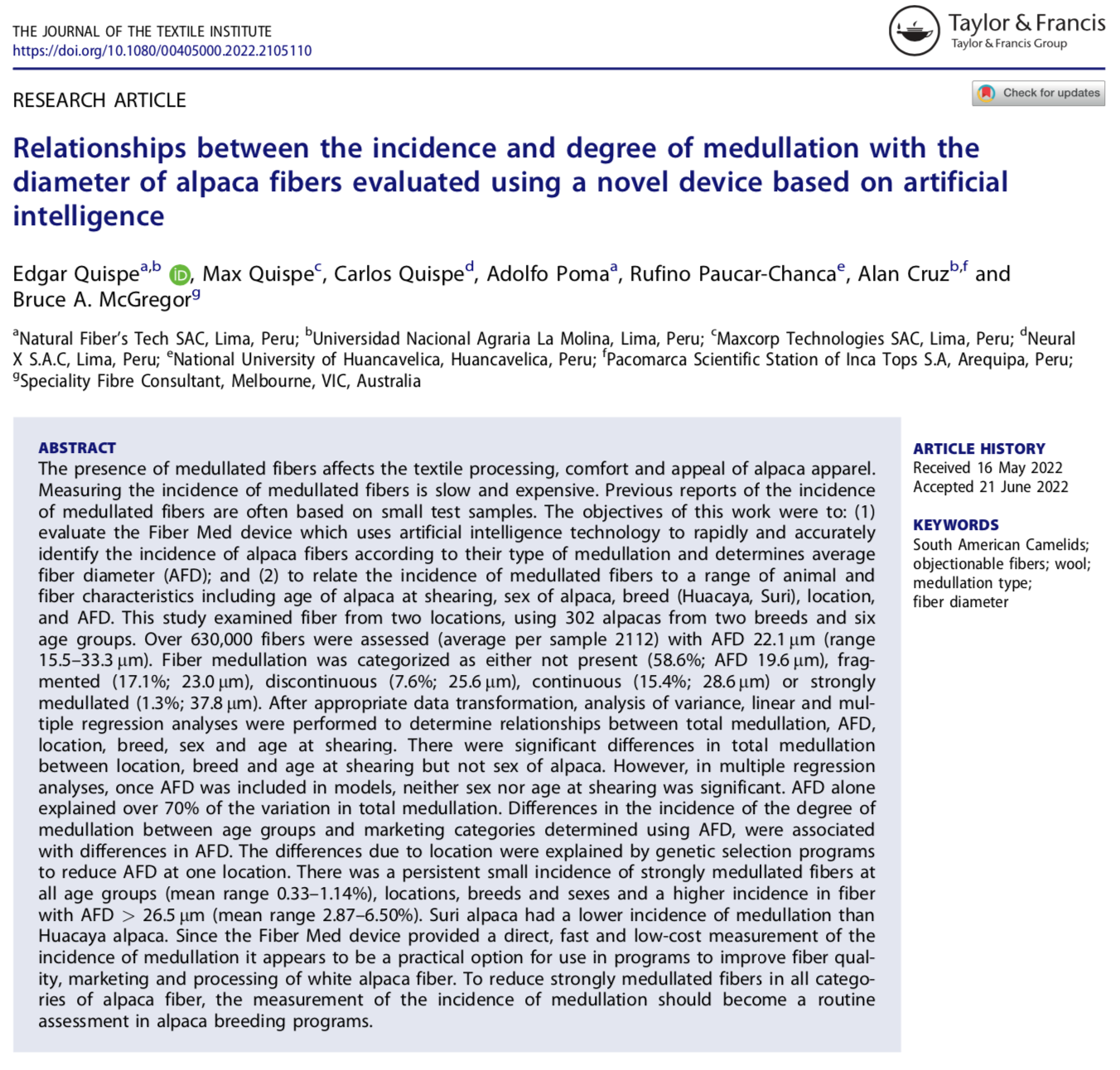
Abstract
The presence of medullated fibers affects the textile processing, comfort and appeal of alpaca apparel. Measuring the incidence of medullated fibers is slow and expensive. Previous reports of the incidence of medullated fibers are often based on small test samples. The objectives of this work were to: (1) evaluate the Fiber Med device which uses artificial intelligence technology to rapidly and accurately identify the incidence of alpaca fibers according to their type of medullation and determines average fiber diameter (AFD); and (2) to relate the incidence of medullated fibers to a range of animal and fiber characteristics including age of alpaca at shearing, sex of alpaca, breed (Huacaya, Suri), location, and AFD. This study examined fiber from two locations, using 302 alpacas from two breeds and six age groups. Over 630,000 fibers were assessed (average per sample 2112) with AFD 22.1lm (range 15.5–33.3lm). Fiber medullation was categorized as either not present (58.6%; AFD 19.6lm), frag- mented (17.1%; 23.0lm), discontinuous (7.6%; 25.6lm), continuous (15.4%; 28.6lm) or strongly medullated (1.3%; 37.8 lm). After appropriate data transformation, analysis of variance, linear and mul- tiple regression analyses were performed to determine relationships between total medullation, AFD, location, breed, sex and age at shearing. There were significant differences in total medullation between location, breed and age at shearing but not sex of alpaca. However, in multiple regression analyses, once AFD was included in models, neither sex nor age at shearing was significant. AFD alone explained over 70% of the variation in total medullation. Differences in the incidence of the degree of medullation between age groups and marketing categories determined using AFD, were associated with differences in AFD. The differences due to location were explained by genetic selection programs to reduce AFD at one location. There was a persistent small incidence of strongly medullated fibers at all age groups (mean range 0.33–1.14%), locations, breeds and sexes and a higher incidence in fiber with AFD > 26.5 lm (mean range 2.87–6.50%). Suri alpaca had a lower incidence of medullation than Huacaya alpaca. Since the Fiber Med device provided a direct, fast and low-cost measurement of the incidence of medullation it appears to be a practical option for use in programs to improve fiber qual- ity, marketing and processing of white alpaca fiber. To reduce strongly medullated fibers in all catego- ries of alpaca fiber, the measurement of the incidence of medullation should become a routine assessment in alpaca breeding programs.
Keywords: South American Camelids; objectionable fibers; wool; medullation type; fiber diameter
